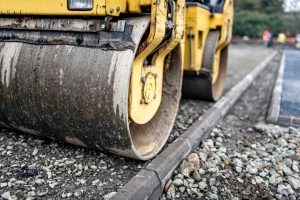Two major forces are combining to create extraordinary opportunities for infrastructure project participants in the United States. One is the long pent-up demand for overhaul of the nation’s roads, ports, dams and other civil works. The American Society of Civil Engineers (ASCE) routinely awards “C-” or worse grades for the status and safety of the country’s backbone facilities. The lack of prior investment is apparent to anyone who uses public transit in the U.S. and then uses similar conveniences in major cities around the globe.
Articles Posted in Public-Private Partnerships (PPP)
Pillsbury Helps Unpack Value-for-Money Reviews for California Public-Private Partnerships
Pillsbury attorney Rob James recently contributed to a report by the Bay Area Council Economic Institute detailing the Value for Money (VfM) provisions of the Federal Infrastructure Investment and Jobs Act. The report describes how large-scale public works that are eligible for structuring as a public-private partnership (PPP) should be reviewed for potential use of alternative project delivery methods, including PPPs. Pillsbury illustrated the California eligibility statutes in the comprehensive Gravel2Gavel post and chart, cited in the report and available here.
California Statutes Authorizing Public-Private Partnership Contracting
Public-private partnerships are often cited as a key pathway to restoring and enhancing the nation’s infrastructure. They can be challenging arrangements to structure. (As a result of the pandemic, they have even suffered the indignity of having their “PPP” acronym coopted by the Paycheck Protection Program. With apologies to Small Business Administration practitioners, we use “PPP” in this article to refer to the infrastructure tool.)
COVID-19 and Public Companies: Q&A
The SEC has provided conditional regulatory relief regarding filing deadlines and has issued guidance regarding annual meetings to assist public companies impacted by COVID-19. In “COVID-19: Q&A for Public Companies,” colleagues Davina K. Kaile, Gabriella A. Lombardi, Christina F. Pearson and Stanton D. Wong addresses some of the most frequently asked questions of public companies on how to navigate the challenges posed by COVID-19.
Council on Environmental Quality and Office of Management and Budget Issue Joint Guidance for State Transportation Departments with NEPA Assignment
On February 26, 2019, the Council on Environmental Quality (CEQ) and Office of Management and Budget (OMB) issued a joint memorandum (Memo) clarifying how state transportation departments that have been delegated responsibility under National Environmental Policy Act (NEPA) should implement federal directives to streamline the environmental review and approvals of major infrastructure projects. While the Memo establishes no new affirmative duties on these state agencies, it reflects yet another step in the Trump administration’s continued efforts to ensure collective adherence to its goal of expediting environmental review under NEPA.
L.A. Metro P3 Funding Options and the California Infrastructure Financing Act
 The Los Angeles County Metropolitan Transportation Authority (Metro) is the agency that operates public transportation for all of Los Angeles County. With the passage of Measure M by voters in 2016, Metro has signaled their intent to improve and expand public transit in L.A. County. Just this year, Metro adopted “Twenty-Eight by ’28,” an initiative spearheaded by Mayor Eric Garcetti. The initiative aims to complete 28 major transportation projects by the 2028 Summer Olympic Games, set to be hosted in Los Angeles. This is an ambitious goal. Of the projects listed, 17 are already scheduled to be completed by 2028; however, eight have schedules that would need to be advanced, and three would need new funding resources.
The Los Angeles County Metropolitan Transportation Authority (Metro) is the agency that operates public transportation for all of Los Angeles County. With the passage of Measure M by voters in 2016, Metro has signaled their intent to improve and expand public transit in L.A. County. Just this year, Metro adopted “Twenty-Eight by ’28,” an initiative spearheaded by Mayor Eric Garcetti. The initiative aims to complete 28 major transportation projects by the 2028 Summer Olympic Games, set to be hosted in Los Angeles. This is an ambitious goal. Of the projects listed, 17 are already scheduled to be completed by 2028; however, eight have schedules that would need to be advanced, and three would need new funding resources.
U.S. DOT Releases Draft Strategic Plan Beginning Implementation of Trump Administration’s Executive Order on Project Streamlining
On October 19, 2017, the U.S. Department of Transportation (DOT) released a draft Strategic Plan (the Plan) for public comment. The Plan establishes goals and long-term objectives for increasing investment and streamlining federal environmental review and approval of transportation infrastructure projects over the next five years (Fiscal Years 2018-2022). Comments on the draft Plan are due by November 13, 2017. Continue Reading ›
FTA Proposes Rule Waiving Regulatory Burdens on Public-Private Partnerships (P3s) for Public Transportation Projects
On July 31, 2017, the Federal Transit Administration (FTA) published a notice of proposed rulemaking in the Federal Register, for a proposed regulation that would establish new, experimental procedures to encourage use of public-private partnerships (P3s), joint developments and other private investment mechanisms in surface transportation capital projects. The rulemaking is linked to a statutory provision in the Moving Ahead for Progress in the 21st Century Act, which requires FTA to identify provisions at 49 U.S.C. chapter 53 and any regulations or practices thereunder that impede greater use of P3s and private investment. Potential private investors in public transportation infrastructure projects, as well as local and state transportation agencies that may be considering mechanisms of private funding, should be aware of the proposed new procedures. Public comments on the proposal are due September 29, 2017.
President’s Infrastructure Plan Will Present Opportunities, Face Challenges
 Rebuilding America’s aging infrastructure is one task that most economists and civil engineers, and most Americans, agree should be at or near the top of President Donald Trump’s agenda. President Trump touted his background as a real estate developer to convince voters that he was best positioned to identify priorities and bring various interest groups together to structure concrete solutions. If he can harness bipartisan support for fixing or upgrading roads, bridges, tunnels, railways, airports, dams and other critical infrastructure, while satisfying Congressional budget hawks, he will fulfill one of his most consequential campaign promises. However, the just announced Trump Tax-Cut Plan, while light on technical detail, would almost certainly enlarge the budget deficit and will complicate any legislative push for infrastructure funding.
Rebuilding America’s aging infrastructure is one task that most economists and civil engineers, and most Americans, agree should be at or near the top of President Donald Trump’s agenda. President Trump touted his background as a real estate developer to convince voters that he was best positioned to identify priorities and bring various interest groups together to structure concrete solutions. If he can harness bipartisan support for fixing or upgrading roads, bridges, tunnels, railways, airports, dams and other critical infrastructure, while satisfying Congressional budget hawks, he will fulfill one of his most consequential campaign promises. However, the just announced Trump Tax-Cut Plan, while light on technical detail, would almost certainly enlarge the budget deficit and will complicate any legislative push for infrastructure funding.
Eminent Domain in California – What You Should Know and What You Can Do BEFORE the Government Comes to Take Your Property
Public development and infrastructure projects are on the rise in California. This is a good thing for the economy.  But it also means that private property will often be needed to complete these projects. Public agencies may acquire private property upon payment of just compensation, without the owner’s consent, through an eminent domain action. Property near highways, railroads, public utilities, government buildings and other public facilities are frequent acquisition targets for expansion of these facilities, as are those properties in the path of development of growing cities. But virtually any property may be subject to public acquisition, either through condemnation of the entire property or of easements in the property.
But it also means that private property will often be needed to complete these projects. Public agencies may acquire private property upon payment of just compensation, without the owner’s consent, through an eminent domain action. Property near highways, railroads, public utilities, government buildings and other public facilities are frequent acquisition targets for expansion of these facilities, as are those properties in the path of development of growing cities. But virtually any property may be subject to public acquisition, either through condemnation of the entire property or of easements in the property.
 Gravel2Gavel Construction & Real Estate Law Blog
Gravel2Gavel Construction & Real Estate Law Blog


